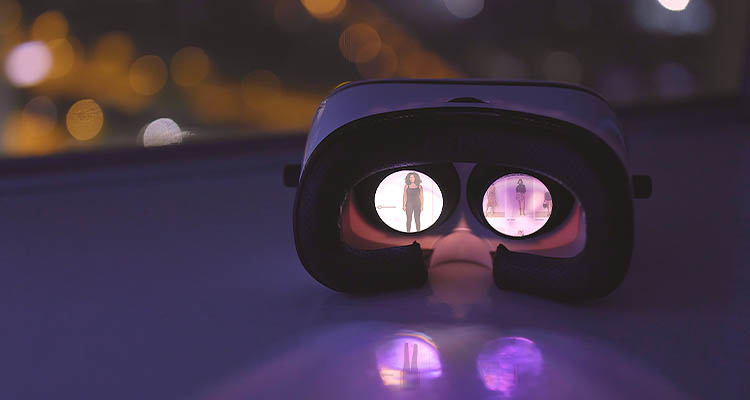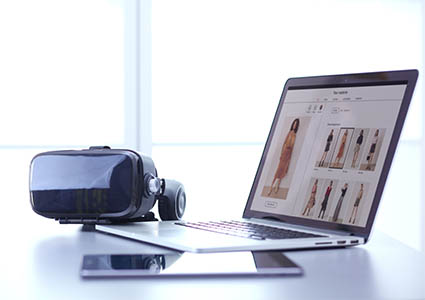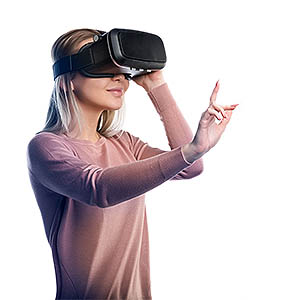
New tech can help online shoppers try out products in a much more realistic way
Virtual Reality (VR) is taking the fashion industry by storm. With the rise of online shopping, there has been a strong demand for a more personalized and true-to-life online offering and shopping experience. Virtual reality technology has revolutionized the way consumers interact with brands, making digital offering more realistic and easier to access.
 The use of Virtual Technology within fashion retail
The use of Virtual Technology within fashion retail
Virtual Reality is used in fashion retail in several ways – as an imitation of a brick-and-mortar store on a VR channel through a headset for an immersive experience, product visualization, or as a virtual try-on tool for clothing prior to purchasing which can be achieved through an avatar, a model, or, as in the case of Zyler Virtual Try-On, through an actual representation of the customer via their headshot and measurements. With the latest developments in virtual try-on technology, a customer can see themselves in hundreds of outfits from the comfort of their own home. Virtual try-on technology can also be used in-store for browsing and selecting from hundreds of outfits to find the right one without physically trying them on.
The benefits that VR is bringing to retail
One of the key benefits VR, and particularly virtual try-on, can provide is an almost instant visualization of an outfit on a customer, enabling the customer to try clothes on without a physical product. In a world where consumers are spoilt for choice and online shopping has reached unprecedented levels, virtual try-on provides a valuable service and gives customers increased confidence in purchasing.
Fashion retailers gain a distinctive edge over the competition through their customer-centric approach to improving shopper convenience. The customer can make a more informed decision prior to buying, often without needing to visit the store, or by browsing through thousands of outfits in-store to find their perfect fit or style. This enhances their shopping experience.
Another important benefit of VR, and specifically virtual try-on, is that it can make recommendations to the user and provide this information back to the retailer, informing inventory management choices, forecasting and offering valuable data tracking and consumer behavior insights.
Since customers are better able to preview and assess an item, virtual try-on technology helps to minimize returns. It allows shoppers to browse through an extensive catalog of clothing and accessories from the comfort of their homes, eliminating geographical limitations and enabling a global reach. With VR, customers can virtually try on clothing without the hassle of having a product delivered and then returned which causes overordering and time-wasting. This reduces the likelihood of returns, boosting customer satisfaction and loyalty and contributes to more sustainable fashion efforts too.
Virtual try-on technology encourages brand engagement and sharing. Many fashion retailers are now utilizing virtual showrooms to showcase their collections, allowing customers to explore and interact with products in a lifelike environment. With virtual try-on, they are also able to try on hundreds, or even thousands of outfits, therefore engaging with the brand more and sharing the photos on social media.
How this technology could be used in other ways
While VR has found a natural fit within fashion retail, its potential applications extend far beyond the current landscape. The technology can be utilized in other areas of retail to enhance customer experiences and drive sales. For example, VR can transform home furniture shopping by enabling customers to virtually visualize how a particular piece of furniture would look in their living space. It can also revolutionize the automotive industry by allowing potential buyers to take virtual test drives, customizing, and exploring different car models before making a purchase decision. The possibilities are limitless, with VR poised to reshape various retail sectors.
The future of VR in retail
As technology continues to evolve, we can anticipate several exciting developments. Firstly, we can expect more realistic and immersive virtual experiences, bringing customers even closer to the physical retail environment. Moreover, as VR becomes more accessible and affordable, we can expect an increase in adoption by smaller retailers, leading to a democratization of this technology.
Furthermore, social VR platforms will play a significant role in the future of retail. Virtual environments that allow users to interact with friends, family, and even fashion influencers will create a sense of community and provide shoppers with a more social and engaging experience. This opens up new opportunities for virtual shopping events, collaborative styling sessions, and virtual fashion shows, bringing people together in a virtual space regardless of their physical location.
Another emerging trend is the customization of virtual avatars. Brands are exploring the concept of creating personalized virtual representations of customers, allowing them to virtually try on clothes and experiment with different styles. This customization aspect enhances the shopping experience and fosters a stronger connection between the customer and the brand. In terms of virtual try-on, the technology is
likely to be expanded across fashion brands and fashion and accessory offerings.
www.zyler.com
Zyler is a virtual try-on solution for fashion brands and retailers that allows their customers to try on clothing in just a few simple steps. Zyler was created by Anthropics Technology, an AI technology solutions company based in London, UK.